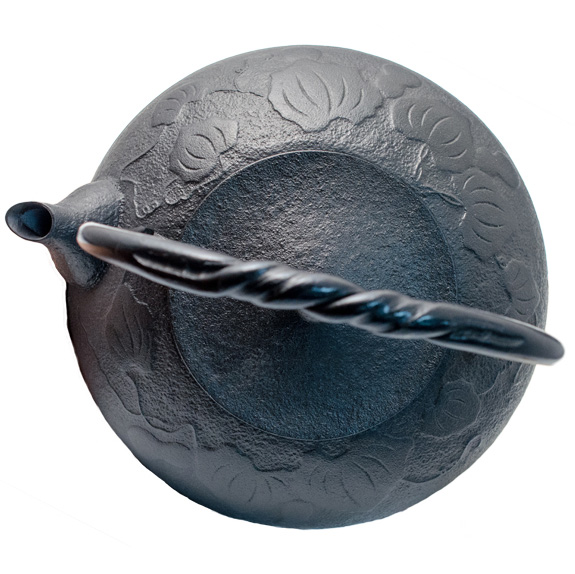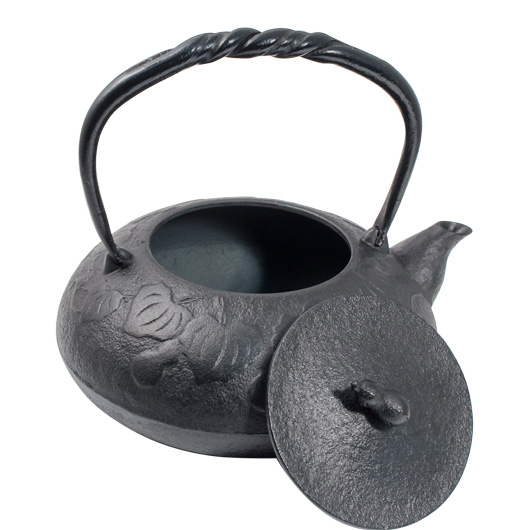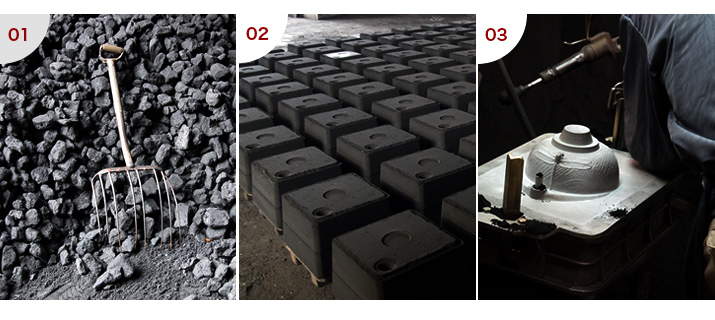Nambu Ironware, Iron Kettle, HISAGO (Gourd), black,1.2L

Counting the number of gourds, you will find six in total. The number six implys "perfect health" in Japanese.
We value superstitious beliefs, which has been a part of our daily lives since ancient times.
Notice
The surface is coated with an antirust oxide layer using the traditional technique called kama-yaki (high temperature baking treatment), but as it is cast iron, rust may occur due to moisture and humidity.

To make tea and coffee great
The water boiled in Nambu iron kettle tastes mellow and sweet even when drunk straight.
This is due to the effect of iron leaching into the hot water, but in order for the iron to leach out, the inside cannot be enameled or otherwise treated, and rust is liable to occur.
Nambu ironware is baked using the traditional technique called kama-yaki to produce an oxide layer on the surface. It leads to "rust resistance" and "water quality improvement" and makes tea and coffee taste better.

| Product Details |
|---|
| Materials |
Cast iron, Steel (Handle)
*Suitable for all stovetops including induction
|
| DIMENSIONS |
Fixed hunddle
Body diameter excluding the spout: approx. 18.5cm
Height to the handle: approx. 18.5cm
Full capacity: 1.2L
Weight: approx.2.04kg
|
| CARRE INSTRUCTIONS |
When using induction heating, use low to medium heat.
Do not wash with detergent.
Do not wash using a sponge or scrubber.
Wipe off the excess water around the lid and other parts well, as discoloration and rusting can easily occur.
Please note that cooking near this pot may result in oil stains and discoloration due to oil splashes.
If the gas flame reaches the body of the pot, the part is likely to discolor, so be careful not to increase the heat too much.
Used over an open flame, the base will gradually turn white.
|
Nambu Ironware Production

01. Coke is the fuel. Coke has a calorific value of more than 1,500 degrees Celsius. This heat melts iron.
02. A mold made of sand. Molten iron is poured into the mold to form an iron kettle or teapot.
03. This mold is a modern remake of Tominoshin Oikawa V's original tetsubin dragonfly from 1954. This is used to make the sand mold in 02.